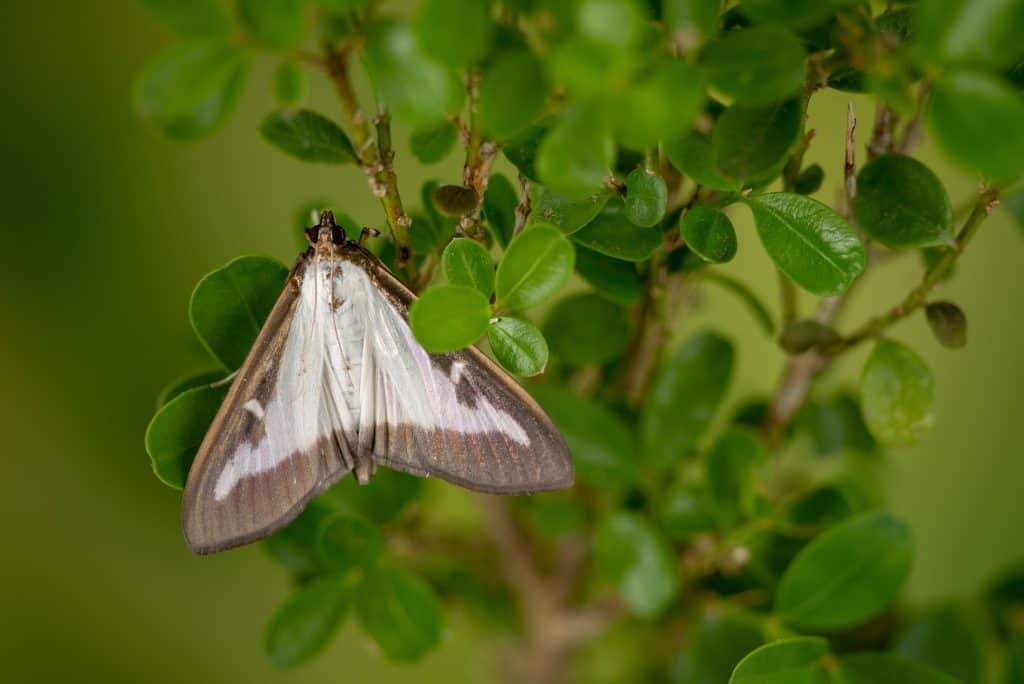Until recently this species was not found in Poland. Boxwood moth (Cydalima perspectalis) came to us from Asia, most probably with imported boxwood seedlings. It is a very dangerous pest, which can destroy the whole plant in a few days. There are already first signs that this year the insect is also feeding in our gardens and unfortunately it is spreading all the time.
The boxwood moth, also called Asian moth, is one of the largest moth species found in Europe. The adult form of the insect is characterized by a grayish-brown color with a white spot in the middle of its wings, which span from 40 to 45 mm. It appears on boxwood shrubs from April to October

Boxwood shrubs which are infested by the moth can be recognized quite easily. The previously green and dense branches start to wither. As a result of feeding by the pest, the leaves lose their color and begin to curl and threads of yarn with green excrement of the pest can be seen between the twigs. Young larvae bite the boxwood, while older larvae are more voracious and can eat entire leaves and even young shoots, eventually leading to the death of the plant. It is important to inspect the shrubs regularly, carefully fanning out the branches, as the larvae are very good at hiding. In addition, the boxwood moth, can reproduce very quickly, producing even several generations in a single season, so it should be eliminated as soon as possible, and protection against this pest should be repeated from time to time.
First of all, the boxwood bushes should be inspected frequently and very carefully. Young larvae can be removed manually by pulling them off the bush or shake them off by shaking the plant and placing them on a plastic sheet or fleece. You can also try to remove the moth with water, directing a strong stream at the affected branches. The flushed larvae should be destroyed immediately so that they do not move to other boxwood shrubs.
>> Read also: Rose diseases and pests that can attack them
In the fight against this pest, however, the most effective method is the chemical method using plant protection products. It is worth using the offer of manufacturers who specialize in the fight against garden pests and use products with a long action, so that the spray will work even where it is not accurately spread. The most commonly recommended for controlling this pest is Mospilan 20 SP.
Although this is a really dangerous pest, we reassure gardeners with the information that the boxwood moth only feeds on boxwood leaves and does not attack other plants.
>> See also: Take care of your garden! Home Remedies for Aphids